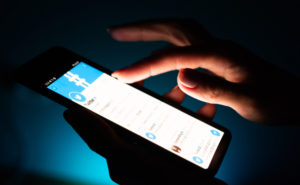
At a National Laboratory, AI Tackles Misinformation & More

In a world that is slowly recovering from the COVID-19 pandemic and a country that is slowly recovering from the 2020 election, misinformation is an increasingly urgent topic, with issues like vaccination and election integrity hanging in the balance. At Pacific Northwest National Laboratory (PNNL), researchers have been using AI to understand how – and why – misinformation spreads across social media.
“When adversaries are spreading misinformation, there is always an intent. They are doing it for a reason—to spread fear, make a profit, influence politics,” said Svitlana Volkova, a senior research scientist in data sciences and analytics at PNNL, in an interview with John Roach.
Volkova’s research team, working with DARPA, has been applying natural language processing and deep learning to process massive datasets from Twitter and other sources, tracking the flow of misinformation and disinformation. “It’s really impossible to get a sense of everything that is happening at the scale we need for modeling human behavior utilizing traditional data sources,” Volkova said. “But if you move to the nontraditional data sources, for example mobile data or open social media data, you can have a hand on the pulse.”
When COVID-19 struck, misinformation ran rampant: 5G, masks, vaccines. Volkova’s team leapt into action, assessing how mistruths spread across platforms. Unfortunately, they found that the misinformation aimed at swaying political views or fearmongering spread fastest.
Still, Volkova thinks this information very useful for policymakers and health bureaucrats, who might now “know what knobs to turn” when combatting misinformation on social media.
Analyzing these kinds of nontraditional data also yielded returns when trying to track the spread of the viruses themselves. A few years before the pandemic, Volkova’s team had used an AI-powered human behavior model powered by social media data to predict the spread of flu-like illnesses. In 2020, they retrofitted this work to assess responses to COVID-19 policy interventions – such as social distancing and mask-wearing – by locality.
“If you don’t know whether people are actually wearing masks – if you don’t know whether people are complying and staying home – your models are so wrong,” Volkova said. “I like to talk about it from the perspective of unknown unknowns. We don’t know what we don’t know and when you are trying to model a phenomenon, knowing everything is required, but it’s impossible. There are always unknown unknowns. By going and looking into nontraditional data sources that are real time, you can have fewer unknown unknowns.”
To learn more about this research, read PNNL’s coverage here.






























